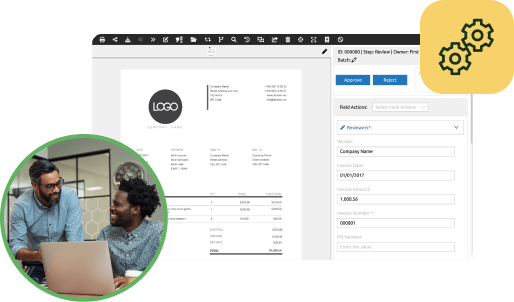
Janet Martin
Janet joined the PairSoft team upon its merger with Paramount Workplace, where she was also an integral part of the sales team for years. Janet resides in Michigan with her family.
View all posts by Janet MartinJanet Martin

Fortunately, you’re not alone. Hundreds of fundraising leaders have been in your shoes, and they’ve learned valuable lessons about what strategies work well and which aren’t effective.
In this post, we’re sharing some of their expert advice for new organizers. Whether you’re entering the fundraising fray at a large nonprofit or a volunteer-led booster club, these tips and best practices will help you start off strong.
Every fundraiser needs a story. Why are you raising money? What programs, services, or advocacy efforts will donations fund? Who or what ultimately benefits, and why do they need your organization’s help? The answers to these questions will guide your fundraiser’s narrative.
When building a narrative for your fundraiser, experts advise creating a central message that directly appeals to your audience. This message should be a brief yet compelling statement or story that explains your fundraiser’s goals and the “why” behind them.
In the Meyer Partners nonprofit storytelling guide, direct response fundraising and marketing expert Bonnie Meyer recommends creating narratives grounded in the “3 R’s:”
You can apply the “3 R’s” to many aspects of your fundraising strategy. No matter how you incorporate your narrative into your campaign—from sharing a beneficiary’s story in appeals to celebrating your nonprofit’s impact on a donor wall—keep the “3 R’s” in mind. Ensure all communications align with your central narrative and remain relevant, resonant, and respectful.
One of the first lessons fundraising organizers learn is the importance of technology. Joan Garry, renowned fundraiser and founder of the Nonprofit Leadership Lab, emphasizes that you can’t afford to think of technology as overhead. On her blog, she says that “Technology is not just a tool but rather central to your engagement strategy, to your client service strategy, to your development strategy.”
How do you choose the right technology to invest in? That depends on your organization’s mission, size, needs, and technological expertise. For instance, you might benefit from:
You’re not limited to just one of these platforms, and there are plenty of other helpful tools to explore, such as marketing and communications software or volunteer management platforms. You can always start with one solution and add on others (or purchase more comprehensive software) in the future. Remember that your tech stack will evolve over time as your needs shift—that means your organization is growing!
In a recent study, 50% of nonprofit leaders listed revenue diversification and financial sustainability as a top priority for this year. Veteran fundraising professionals know that relying too heavily on one fundraiser or revenue channel is a recipe for disaster, especially if that channel dries up—that’s why they plan several different ways to raise money year-round.
However, you can still maximize your giving opportunities even if you’re only running a single fundraiser. Include different revenue-generating activities at one event or combine multiple fundraising ideas for your campaign.
For example, here are a few easy revenue opportunities you can add to any fundraiser:
To maximize revenue potential, you might sell discount cards at a restaurant proceeds night or promote matching gifts as part of a year-end giving campaign. You can also explore other opportunities, like selling concessions or branded merchandise at fundraising events where you also sell tickets.
Your donation page is the heart of your online giving strategy, so it must be secure and user-friendly. For instance, you likely already know that your page should have PCI-compliant payment processing. But beyond that, how can you streamline giving and truly make it as easy as possible for donors to support your cause?
Follow the advice of fundraising expert Rachel Muir: “Every step you remove from the donation process increases the likelihood a donor will complete the gift.”
In practice, this concept means making the following changes to your donation page to simplify giving:
After streamlining your donation process, follow up with donors to ensure an easy gift experience. Send a quick survey to everyone who donated in the last month, asking questions like, “How easy was the giving process on a scale of 1 to 10?” and “Did you run into any technical issues when making your donation?” Evaluate the results and make tweaks to your donation page as necessary.
There’s always more to learn about fundraising, but these tips should give you a firm foundation. For more learning opportunities, explore online fundraising resources like blogs, webinars, and podcasts developed by experts.
Get a free demo to learn how our tailored workflows have boosted the AP performance for organizations of all sizes.


Many organizations start with manual receipt handling, fragmented card feeds and slow AP processes. Implement AI agents to auto-capture receipts, route approvals, enable punch-out buys and post to the ERP.
Result: faster batching, fewer errors and cost savings. “This saves us hours every month.”
Many organizations face slow, paper-heavy AP and fragmented procurement that waste time and inflate costs. AI Agents can automate approvals, PO matching and record sync to improve speed, accuracy and control. Client quote: “It freed up hours and made our process reliable.”
Operational drag and rising costs slow growth: teams waste time on manual tasks, misaligned priorities and opaque processes. AI Agents help automate routine work and coordinate actions across teams. “We’ve lost time to repeats and handoffs,” says a typical client.
Companies struggle with manual procurement, fragmented approvals, and costly integrations that slow growth and obscure spend. Our AI Agents streamline requisitions, POs, and invoice matching to cut manual work and improve visibility. “We were wasting time and missing insights,” says a client.

Many teams start with fragmented PO/AP systems, manual matching and delayed financial reporting. Deploying AI agents to automate PO checks, real-time encumbrance tracking and invoice matching reduces processing time and errors, delivering live budgets and faster closes. “Finally, we can see current balances and approve instantly.”
Many companies juggle growing invoice volumes and legacy systems. They struggle with manual processes, compliance gaps and limited headcount. Our AI Agents automate integrations, enforce rules and surface exceptions. The typical outcome: faster closes and measurable ROI. “We stopped chasing invoices.”